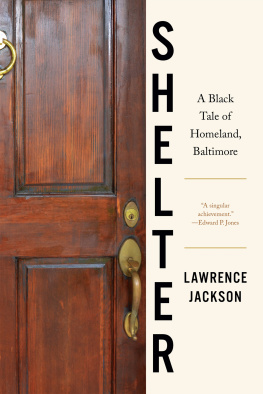Dennis Patrick Halpin - A Brotherhood of Liberty: Black Reconstruction and Its Legacies in Baltimore, 1865-1920
Here you can read online Dennis Patrick Halpin - A Brotherhood of Liberty: Black Reconstruction and Its Legacies in Baltimore, 1865-1920 full text of the book (entire story) in english for free. Download pdf and epub, get meaning, cover and reviews about this ebook. City: Philadelphia, year: 2019, publisher: University of Pennsylvania Press, genre: History / Science. Description of the work, (preface) as well as reviews are available. Best literature library LitArk.com created for fans of good reading and offers a wide selection of genres:
Romance novel
Science fiction
Adventure
Detective
Science
History
Home and family
Prose
Art
Politics
Computer
Non-fiction
Religion
Business
Children
Humor
Choose a favorite category and find really read worthwhile books. Enjoy immersion in the world of imagination, feel the emotions of the characters or learn something new for yourself, make an fascinating discovery.

- Book:A Brotherhood of Liberty: Black Reconstruction and Its Legacies in Baltimore, 1865-1920
- Author:
- Publisher:University of Pennsylvania Press
- Genre:
- Year:2019
- City:Philadelphia
- Rating:5 / 5
- Favourites:Add to favourites
- Your mark:
A Brotherhood of Liberty: Black Reconstruction and Its Legacies in Baltimore, 1865-1920: summary, description and annotation
We offer to read an annotation, description, summary or preface (depends on what the author of the book "A Brotherhood of Liberty: Black Reconstruction and Its Legacies in Baltimore, 1865-1920" wrote himself). If you haven't found the necessary information about the book — write in the comments, we will try to find it.
In A Brotherhood of Liberty, Dennis Patrick Halpin shifts the focus of the black freedom struggle from the Deep South to argue that Baltimore is key to understanding the trajectory of civil rights in the late nineteenth and early twentieth centuries. In the 1870s and early 1880s, a dynamic group of black political leaders migrated to Baltimore from rural Virginia and Maryland. These activists, mostly former slaves who subsequently trained in the ministry, pushed Baltimore to fulfill Reconstructions promise of racial equality. In doing so, they were part of a larger effort among African Americans to create new forms of black politics by founding churches, starting businesses, establishing community centers, and creating newspapers. Black Baltimoreans successfully challenged Jim Crow regulations on public transit, in the courts, in the voting booth, and on the streets of residential neighborhoods. They formed some of the nations earliest civil rights organizations, including the United Mutual Brotherhood of Liberty, to define their own freedom in the period after the Civil War.
Halpin shows how black Baltimoreans successes prompted segregationists to reformulate their tactics. He examines how segregationists countered activists victories by using Progressive Era concerns over urban order and corruption to criminalize and disenfranchise African Americans. Indeed, he argues the Progressive Era was crucial in establishing the racialized carceral state of the twentieth-century United States. Tracing the civil rights victories scored by black Baltimoreans that inspired activists throughout the nation and subsequent generations, A Brotherhood of Liberty highlights the strategies that can continue to be useful today, as well as the challenges that may be faced.
Dennis Patrick Halpin: author's other books
Who wrote A Brotherhood of Liberty: Black Reconstruction and Its Legacies in Baltimore, 1865-1920? Find out the surname, the name of the author of the book and a list of all author's works by series.










